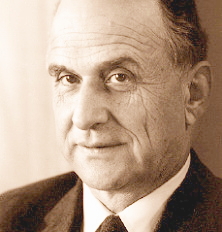Nelson Goodman facts for kids
Quick facts for kids
Nelson Goodman
|
|
|---|---|
 |
|
| Born |
Henry Nelson Goodman
August 7, 1906 |
| Died | November 25, 1998 (aged 92) |
| Education | Harvard University (PhD, 1941) |
| Era | 20th-century philosophy |
| Region | Western philosophy |
| School | Analytic Nominalism |
| Thesis | A Study of Qualities (1941) |
| Doctoral advisor | C. I. Lewis |
| Doctoral students | Israel Scheffler |
| Other notable students | Noam Chomsky, Sydney Morgenbesser, Stephen Stich, Hilary Putnam |
|
Main interests
|
Logic, induction, counterfactuals, mereology, aesthetics, philosophy of science, philosophy of language |
|
Notable ideas
|
New riddle of induction, Goodman–Leonard calculus of individuals, counterfactual conditional, Goodman's method, languages of art, irrealism |
|
Influences
|
|
|
Influenced
|
|
Henry Nelson Goodman (born August 7, 1906 – died November 25, 1998) was an American philosopher. He was famous for his ideas about how we predict the future based on the past. He also studied how things are made of parts, and what makes art "art." He explored how we understand what is real.
Contents
Life and Career
Goodman was born in Somerville, Massachusetts. His parents were Sarah Elizabeth and Henry Lewis Goodman. He went to Harvard University and earned his first degree in 1928.
In the 1930s, Goodman ran an art gallery in Boston. At the same time, he was studying for his PhD in philosophy at Harvard. He finished his PhD in 1941. His experience with art helped him later become well-known for his ideas about art. During World War II, he worked as a psychologist for the U.S. Army.
He taught at the University of Pennsylvania from 1946 to 1964. Some of his students there became famous thinkers. These included Noam Chomsky, Sydney Morgenbesser, Stephen Stich, and Hilary Putnam. He also taught at Brandeis University. In 1968, he became a professor of philosophy at Harvard.
In 1967, Goodman started Harvard Project Zero. This project studied how people think about art and how art can be taught. He led the project for four years. He continued to advise it for many years after that.
Goodman passed away in Needham, Massachusetts.
Philosophical Work
The Puzzle of Prediction: "Grue"
In his book Fact, Fiction, and Forecast, Goodman introduced a new puzzle. It was about how we make predictions about the future. This puzzle is called the "new riddle of induction."
Think about how we learn from experience. If you see many pieces of copper conduct electricity, you expect other copper pieces to do the same. This is called inductive reasoning. It means using past observations to guess what will happen next.
Goodman pointed out a problem. Some patterns we see help us make good predictions. But other patterns do not. For example, if a man in a room is a third son, that doesn't mean other men in the room are also third sons.
To show this problem, Goodman created a made-up word: "grue."
- Something is "grue" if it is green when we look at it before a certain time (let's say, the year 2050).
- But if we look at it after 2050, it is "grue" only if it is blue.
Now, imagine you are looking at emeralds. All the emeralds you see before 2050 are green. This makes you think: "All emeralds are green." But these same emeralds also fit the idea that "All emeralds are grue." They are green before 2050, so they are "grue."
So, before 2050, both ideas seem equally true based on what we see. But after 2050, if emeralds are still green, then "All emeralds are grue" would mean they suddenly turn blue! This shows how tricky it is to know which patterns are real "laws" and which are just temporary. Goodman's "grue" example made philosophers think much harder about how we learn and predict.
Parts and Wholes: Mereology
Goodman was also a founder of a modern idea called nominalism. This idea suggests that in philosophy, we should focus on individual things. We should not focus on abstract groups or "sets" of things. Goodman believed we should only talk about things that truly exist as separate items.
Goodman also worked on mereology. This is the study of parts and wholes. It looks at how things are made up of other things. For example, a bicycle is a whole, but it is made of parts like wheels, a frame, and handlebars. Mereology helps us understand how these parts connect to form a whole. Goodman's work helped develop this way of thinking about how things are put together.
See also

